Things to Consider
1- This blog post took more than three hours to prepare.
2- Folks who invest the time to consider all of the questions, leave a comment, and then check out the answers and explanations, will become better bird photographers.
3- The educational opportunities to learn that are presented in each and every BIRDS AS ART blog post are unparalleled.
$600 IPT Discount
I am offering a $600/person discount on the Fall #2 DeSoto IPT to the first person or couple who would like to share a Gulfport AirBnB with me. Please get in touch ASAP via e-mail or call or text me at 863-221-2372. Please text me if I do not pick up. Dates and details below.
Answers to the Questions in the Previous Blog Post
High Level Exposure Question
When evaluated in RawDigger, the raw file exposure was determined to be absolutely perfect despite the 171,00 over-exposed pixels. All are invited to leave a comment explaining why this was the prefect exposure for this situation. To arrive at the answer, ask yourself these questions:
1- Where were all of those OvExp pixels?
The over-exposed pixels were all in the specular highlights on the water.
2- If all of the over-exposed pixels have been eliminated, what would the image have looked like?
If I had reduced the exposure so that none of the specular highlights were over-exposed the image would have shown a black flamingo set against black water. Kudos to Elinor Osborne the only person to tackle the question. Best of all, she came up with the correct answer.
High Level Mode Question
I state often that folks should be working in Manual mode for 95+ percent of their bird photography. Study all of the EXIF data and leave a comment letting us know why you think I was working in Shutter Priority with Exposure Compensation on the thumb dial. Note: there were other clues throughout the post.
Yes, when backgrounds are fairly constant and the lighting conditions may change drastically as you move the lens, Shutter Priority can make life simpler by setting the necessary ISO as you change the Exposure Compensation (EC). The additional clue was that moments before I had been creating blastoff blurs at slow shutter speeds in Shutter Priority mode with EC on the thumb dial and AUTO ISO. Since the sunrise situation was many, many stops brighter, staying in Shutter Priority with AUTO ISO and EC on the thumb dial made thing much simpler. Once I increased the shutter speed from 1/30 sec. to 1/1000 sec. I simply adjusted the EC so that the specular highlights were showing significant Zebras.
There is no limit to what you can learn by spending time in the field with me.
Perspective Question
In this situation, why would getting very low have been the completely wrong option? This is an easy one.
All who answered this question thought that going from standing to sitting would have included the sun in the frame. They did not realize that that would not happen because I was working at 840mm. What would have happened is that my black flamingo silhouette would have been set almost entirely against the black marsh.
In addition, in silhouette situations where the birds are moving constantly, you need to keep moving so as to keep the subject in front of the sun, in the most brightly lit water.
Be sure to read the several interesting exchanges in the Comments section here.
What’s Up?
For the past few days, I had been urging good friend, multiple IPT veteran David Pugsley to get over to DeSoto ASAP. He called me on Sunday afternoon. Here is what he had to say: Thanks. You were not exaggerating! DeSoto was amazing this morning! I’ve never seen it so good. We had four flamingoes in beautiful blue water with clean backgrounds, hundreds of photographable shorebirds (including 500 Red Knots and dozens of Marbled Godwits), and dozens of huge tern and shorebird blastoffs. Being practically surrounded by thousands of birds was an incredible experience. My friend Alan was along and he enjoyed it as much as I did.
I was glad to learn recently that Roy Holden sold his Canon 500mm f/4L IS lens, the “old five,” immediately after the price drop, and that Ellen Mack sold her Canon 100-400mm L IS II lens within hours of it being listed on the Used Gear Page.
Today is Monday 9 October 2023. I will be working on my first-ever submission to Getty Images. I was grandfathered in there when they purchased Corbis. This move is years overdue and it will be a week-long project at best. As a result, the upcoming Digital Basics III Video Series will be put on the back burner for a while.
Wherever you are an whatever you are doing, I hope that you too have a great day.
Please remember to use the B&H and Amazon links that are found on most blog pages and to use the BIRDSASART discount code at checkout when purchasing your new gear from Bedfords to get 3% back on your credit card and enjoy free second-day air FedEx. Please, also, consider joining a BAA IPT. You will be amazed at how much you will learn!
You can find some great photo accessories (and necessities, like surf booties!) on Amazon by clicking on the Stuff tab on the orange/yellow menu bar above. On a related note, it would be extremely helpful if blog-folks who, like me, spend too much money on Amazon, would get in the habit of clicking on the Amazon logo link on the right side of each blog post when they shop online. As you might expect, doing so will not cost you a single penny, but would be appreciated tremendously by yours truly. And doing so works seamlessly with your Amazon Prime account.
If an item — a Delkin flash card, or a tripod head — for example, that is available from B&H and/or Bedfords, is also available in the BAA Online Store, it would be great, and greatly appreciated, if you would opt to purchase from us. We will match any price. Please remember also to use my B&H affiliate links or to earn 3% cash back at Bedfords by using the BIRDSASART discount code at checkout for your major gear purchases. Doing either often earns you free guides and/or discounts. And always earns my great appreciation.
B&H Simplified
To ensure that I get credit for your B&H purchases, you can always click here. The tracking is invisible but greatly appreciated. And, you can use your PayBoo card. You must use the website to order. B&H will reopen on Fri April 14. Thanking me for the past 4000 educational blog posts could not be any easier and will not cost you one penny. Please shoot me your B&H receipt for major purchases.
Bedfords Simplified
Click here to start your search. Choose standard shipping, and when you get to the payment page, enter BIRDSASART in the discount code box and hit apply. You will be upgraded to free second day air Fed-Ex and receive 3% cash back on your credit card once your stuff ships. Either is greatly appreciated by yours truly.
B&H
Many folks have written recently stating that they purchased a Sony a1 from B&H and would like their free membership in the Sony 1 Info and Updates Group, a $150.00 value. When I check my affiliate account, their orders have not been there. When I let them know that they get credit for B&H purchases only if they use one of the many B&H affiliate links on the blog or begin their searches with this link, they are always disappointed. If in doubt, please contact me via e-mail and request a BH link. I am always glad to help and to guide you to the right gear.
Bedfords Amazing BAA Discount Policy
Folks who have fallen in love with Bedfords can now use the BIRDSASART coupon code at checkout to enjoy a post-purchase, 3% off-statement credit (excluding taxes and shipping charges) on orders paid with a credit card. The 3% credit will be refunded to the card you used for your purchase. Be sure, also, to check the box for free shipping to enjoy free Second Day Air Fed-Ex. This offer does not apply to purchases of Classes, Gift Cards, prior purchases.
Visit the Bedfords website here, shoot Steve Elkins an e-mail, or text him on his cell phone at (479) 381-2592.
Important Note
As an Amazon Associate, I earn a small percentage when you purchase from Amazon after using any of the Amazon links on the blog (including the logo-link on the right side of each blog post page). My affiliate link works fine with Amazon Prime and using it will not cost you a single cent. Huge thanks, BTW 🙂


Gear Questions and Advice
Too many folks attending BAA IPTs and dozens of photographers whom I see in the field and on BPN, are — out of ignorance — using the wrong gear, especially when it comes to tripods and more especially, tripod heads. And the same is true in spades when ordering new camera bodies or lenses. My advice will often save you some serious money and may help you avoid making a seriously bad choice. Please know that I am always glad to answer your gear questions via e-mail. If you are desperate, you can try me on my cell at 863-221-2372. Please leave a message and shoot me a text if I do not pick up.
|
|
|
This image was created on 5 October 2023 at Fort DeSoto Park. Standing at full height in 6 inches of water, I used the handheld Sony FE 200-600mm f/5.6-6.3 G OSS lens (at 600mm) and The One, the Sony Alpha 1 Mirrorless digital camera. ) The exposure was determined using Zebra technology with ISO on the Thumb Dial. ISO 1000. 1/3200 second at f/6.3 (wide-open) in Manual Mode. AWB at 6:29:23pm on a sunny afternoon. RawDigger showed the exposure to be dead-solid perfect. Tracking: Zone/AF-C with Bird Face/Eye Detection enabled performed perfectly. Be sure to click on the image to enjoy the larger, sharper, high-res version. Image #1: American Avocet non-breeding male stretching near wing
|
No Time to Get Low
I was enjoying some great flight photography when I noticed that the handsome avocet had moved away from the flock of dowitchers and was standing in clear water. So, I got up off the ground, dried off my hands, and moved to my right to get on sun angle. As I was moving a bit closer, the avocet began to stretch its near-wing elegantly. I thought about trying to get down on the ground, but realized that the moment would be long gone by the time I did. So, I raised the lens and fired off eight frames. This one was my favorite.
|
|
|
This image was also created on 5 October 2023 at Fort DeSoto Park. Seated in six inches of water I used the knee-pod technique with the handheld Sony FE 200-600mm f/5.6-6.3 G OSS lens (at 600mm) and The One, the Sony Alpha 1 Mirrorless digital camera. ) The exposure was determined using Zebra technology with ISO on the Thumb Dial. ISO 800. 1/2500 second at f/6.3 (wide-open) in Manual Mode. AWB at 6:33:02pm on a sunny afternoon. RawDigger showed the exposure to be dead-solid perfect. Tracking: Expand Spot/AF-C with Bird Face/Eye Detection enabled performed perfectly. Be sure to click on the image to enjoy the larger, sharper, high-res version. Image #2: American Avocet non-breeding male
|
Another Perspective Question
The orangish, o-o-f shapes at the top of the frame, are Marbled Godwits. Would this image have been better or worse had I gotten about 20 inches lower by using the foot-pod technique rather than the knee-pod technique? Why?
Your Call #1
Do your prefer the elegant pose in Image #1 or the intimacy of Image #2? Why?
|
|
|
This image was also created on 5 October 2023 at Fort DeSoto Park. Seated on damp sand, I used the foot-pod technique with the handheld Sony FE 200-600mm f/5.6-6.3 G OSS lens (at 600mm) and The One, the Sony Alpha 1 Mirrorless digital camera. ) The exposure was determined using Zebra technology with ISO on the Thumb Dial. ISO 1600. 1/2500 second at f/6.3 (wide-open) in Manual Mode. AWB at 6:48:23pm on a sunny afternoon. RawDigger showed the exposure to be dead-solid perfect. Tracking: Expand Spot/AF-C with Bird Face/Eye Detection enabled performed perfectly. Be sure to click on the image to enjoy the larger, sharper, high-res version. Image #3: Caspian Tern non-breeding yawning
|
Prayer Answered
The first Caspian Tern that I saw that afternoon landed right in front of me. I was late getting on the bird, it landed in a group of other terns, and it was flying slightly away from me. I got off several shots, but deleted all but one that I kept as a record shot.
Later on, I saw a different Caspian standing in a relatively clear patch of water. So, I moved left and carefully got back down on the ground. I took a few frames with a single Laughing Gull standing right behind the attractive tern thus photo-bombing (ruining) the shot. Then, I prayed. Within seconds my prayers were answered and the subject I wanted badly was completely isolated. In very sweet light. As I placed the lens between my feet, the bird yawned. This was my favorite of a series of about a dozen images. And yes, wing stretches and yawns do not last long.
|
|
|
This image was also created on 5 October 2023 at Fort DeSoto Park. Again, seated on damp sand, I used the foot-pod technique with the handheld Sony FE 200-600mm f/5.6-6.3 G OSS lens (at 600mm) and The One, the Sony Alpha 1 Mirrorless digital camera. ) The exposure was determined using Zebra technology with ISO on the Thumb Dial. ISO 1600. 1/2500 second at f/6.3 (wide-open) in Manual Mode. AWB at 6:48:23pm on a sunny afternoon. RawDigger showed the exposure to be dead-solid perfect. Tracking: Expand Spot/AF-C with Bird Face/Eye Detection enabled performed perfectly. Be sure to click on the image to enjoy the larger, sharper, high-res version. Image #4: Caspian Tern non-breeding
|
Your Call #2
Which do you. prefer, Image #3 with the yawn, or Image #4, a shot of the same bird doing nothing?
Are there any reasons to prefer Image #4 over Image #3? I have two good ones.
|
|
|
This image was created on 6 October 2023. Standing at full height, I used the Robus RC-5558 Vantage Series 3 Carbon Fiber Tripod/Levered-Clamp FlexShooter Pro-mounted Sony FE 600mm f/4 GM OSS lens with the Sony FE 1.4x Teleconverter, and The One, the Sony Alpha 1 Mirrorless Digital Camera.. ISO 400. The exposure was determined by Zebra technology with ISO on the rear wheel: 1/2000 second at f/6.3 (stopped down 1/3-stop — don’t ask me why) in Manual mode. RawDigger showed that the exposure was dead solid perfect. AWB at 8:26:29am on partly cloudy morning. Tracking: Zone/AF-C with Bird-Eye/Face Detection performed perfectly. Be sure to click on the image to enjoy the larger, sharper, high-res version. Image #5: American Flamingo walking by marsh grasses |
A Historical Occurrence
The presence of small groups of American Flamingos in Florida and beyond, driven north by Hurricane Idalia at the end of August 2023, is a notable ornithological event. As noted previously, this species is an American Birding Association Code 4 rarity: Species not recorded annually in the ABA Checklist Area, but with six or more total records-including three or more in the past 30 years-reflecting some pattern of occurrence.
While there is no guarantee that there will still be a few flamingos at DeSoto for the second DeSoto Fall IPT, I surely would not bet against it. As they have been around for more than five weeks, chances are excellent that more than one will still be around. Heck, I am thinking of driving over this week for a morning!
Long Confused: A or An?
For as long as I can remember, I was unsure if “an historical event” or “a historical event” was correct. I found this online here at GRAMLEE.COM this morning:
For the letter “H”, the pronunciation dictates the indefinite article: Use “a” before words where you pronounce the letter “H” such as “a hat,” “a house”, “a happy cat,” or “a historical occurrence” (sic). Use “an” before words where you don’t pronounce the letter “H” such as “an herb,” “an hour,” or “an honorable man.”
|
|
|
All images from SEPT/OCT/NOV at Fort DeSoto. Click on the image to enjoy a larger, sharper high-resolution version. Clockwise from upper left to center: Piping Plover flapping after bath, juvenile Laughing Gull with feather, American Oystercatcher with sea urchins, Willet foraging in surf, American White Pelican juvenile swimming, skimmer/tern/shorebird blast-off blur, American White Pelican in flight, Black-bellied Plover stealing lugworm from Marbled Godwit, Roseate Spoonbill staring. |
The Fall 2023 Fort DeSoto Instructional Photo-Tours
Fall 2023 Fort DeSoto Instructional Photo-Tour #2
3 1/2 Days: Tuesday 17 October through the morning session on Friday 20 October 2023. $1899.00 includes three working lunches. Limit six photographers.
Fall 2023 Fort DeSoto Instructional Photo-Tour #3
3 1/2 Days: Tuesday 31 October through the morning session on Friday 3 November 2023. $1899.00 includes three working lunches. Limit six photographers.
Fall 2023 Fort DeSoto Instructional Photo-Tour #4
3 1/2 Days: Tuesday 14 November through the morning session on Friday 17 November 2023. $1899.00 includes three working lunches. Limit six photographers/Openings: three.
Fall Bird Photography at Fort DeSoto
Fort DeSoto, located just south of St. Petersburg, FL, is a mecca for migrant shorebirds, terns, and gulls in fall. There they join hundreds of egrets, herons, and night-herons that winter on the T-shaped peninsula. With any luck at all, we should get to photograph one of Florida’s most desirable shorebird species: Marbled Godwit. Black-bellied Plover and Willet are easy, American Oystercatcher is pretty much guaranteed. Great Egret, Snowy Egret, Great Blue Heron, Tricolored Heron, and White Ibis are easy as well and we will almost surely come up with a tame Yellow-crowned Night-Heron or two. And there should be some quality Brown Pelican flight photography. In addition, Royal, Sandwich, Forster’s, and Caspian Terns will likely provide us with some good flight opportunities as well. Though not guaranteed, Roseate Spoonbill and Wood Stork might well be expected. And we will be on the lookout for a migrant passerine fallout in the event of a thunderstorm or two.
On this IPT, all will learn the basics and fine points of digital exposure. Nikon and Canon folks will learn to get the right exposure every time after making a single test exposure, and SONY folks will learn to use Zebras so that they can be sure of making excellent exposures before pressing the shutter button. Everyone will learn how to approach free and wild birds without disturbing them, to understand and predict bird behavior, to identify many species of shorebirds, to spot the good situations, to choose the best perspective, to see and understand the light, and to design pleasing images by mastering your camera’s AF system. Most importantly, you will surely learn to evaluate wind and sky conditions and understand how they affect bird photography. And you will learn how and why to work in Manual mode (even if you’re scared of it). The best news is that you will be able to take everything you learn home with you so that you will be a better photographer wherever and whenever you photograph.
|
Clockwise from upper left to center: Long-billed Curlew, juvenile Tricolored Heron, Marbled Godwits, Great Blue Heron, juvenile Pectoral Sandpiper, Wood Stork, smiling Sea Scallop, Ruddy Turnstone scavenging needlefish, Great Blue Heron sunset silhouette at my secret spot, and southbound migrant tern flock blur. |
The Details
There will be a Photoshop/image review session during or after lunch (included) each full day. That will be followed by Instructor Nap Time.
These IPTs will run with only a single registrant (though that is not guaranteed). The best airport is Tampa (TPA). Once you register, you will receive an e-mail with Gulfport AirBnB/VRBO information. If you register soon and would like to share an AirBnB with me, shoot me an e-mail. Other possibilities including taking a cab to and from the airport to our AirBnB and riding with me for $50/day. This saves you both gas and the cost of a rental car.
A $600 deposit is due when you sign up and is payable by credit card. Balances must be paid by check one month before the trip. Your deposit is non-refundable unless the IPT sells out with six folks, so please check your plans carefully before committing. You can register by calling Jim during weekday business hours at 863-692-0906 with a credit card in hand, or by sending a check as follows: make the check out to: BIRDS AS ART and send it via US mail here: BIRDS AS ART, PO BOX 7245, Indian Lake Estates, FL 33855. You will receive a confirmation e-mail with detailed instructions, clothing, and gear advice. Please shoot me an e-mail if you plan to register or if you have any questions on lodging.
Up Early, Stay Out Late!
Obviously, folks attending an IPT will be out in the field early and stay late to take advantage of the sweetest light and sunrise and sunset colors (when possible). The good news is that the days are relatively short in early fall. I really love it when I am leaving the beach on a sunny morning after a great session just as a carful or two of well-rested photographers are arriving. On cloudy days, we may — at the leader’s discretion, stay out in the morning for a long session and skip the afternoon session. To ensure early starts, breakfasts will be your responsibility. And so that we can get some sleep, dinners will sometimes be on your own as well.
Typos
With all blog posts, feel free to e-mail or to leave a comment regarding any typos or errors.


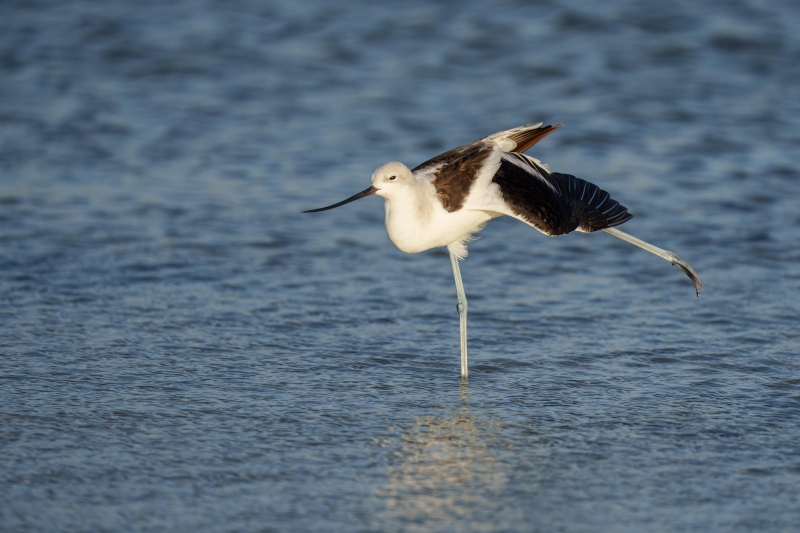
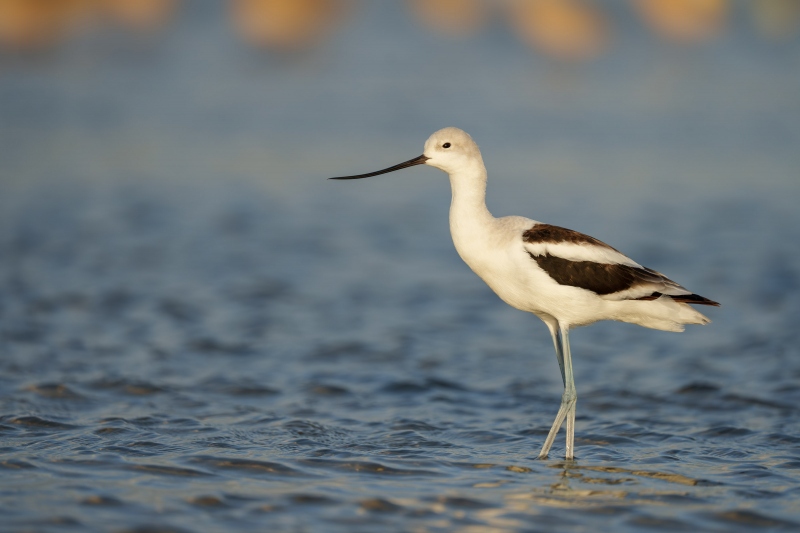
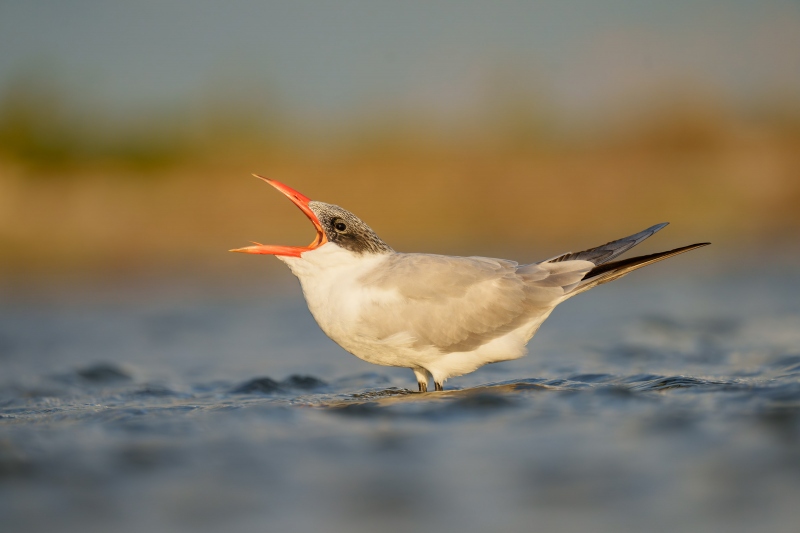
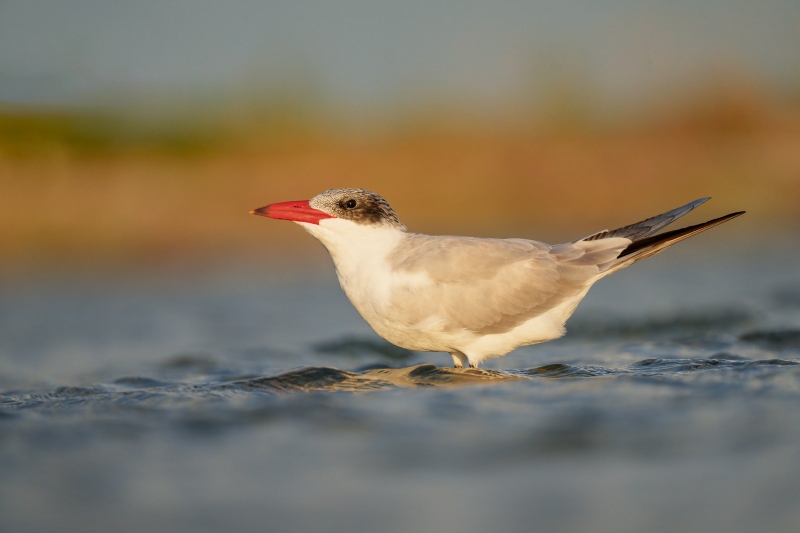
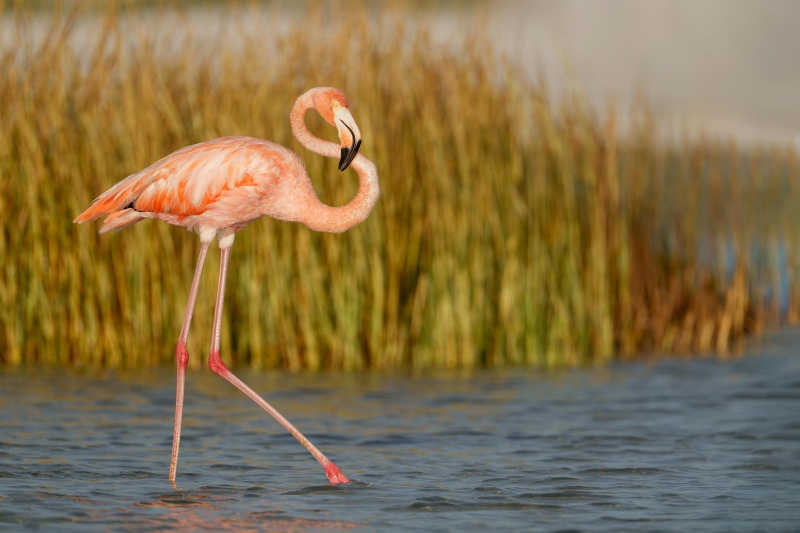
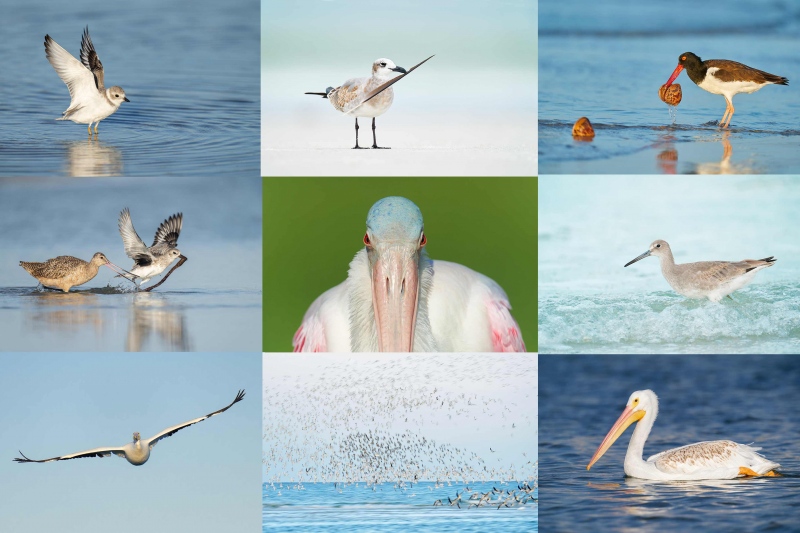














#2 The prominent orange balls at the top of the image are quite distracting to me. If the entire out-of-focus (OOF) bird had been visible by positioning the shot lower, it might have looked more appealing. Alternatively, cropping out those distractions could have improved the composition.
#1 I appreciate the wing stretch as it captures a unique bird behavior, but having the bird at the same eye level as in the portrait would have been ideal. It’s unfortunate that there wasn’t an opportunity to lower the camera to capture the wing stretch from a better angle.
#3 I generally favor images that capture bird behavior, so I find #3 more appealing than #4. Is your preference for #4 driven by the head turn, the intricate water pattern, and the increased reflection of the bird? These aspects do make #4 a strong contender, almost on par with #3 for me.
Hi midlaj,
Thanks for sharing your thoughts and welcome to the blog. I will share my thoughts with the group in a blog post soon.
with love, artie
Teaching us proper grammar too. I like the orange blobs and getting lower would show too much of the blurred godwits. I like the yawn, the more intimate avocet and the flamingo is a good looking shot.
Re: #3 vs #4: the more pronounced reflection of the tern’s breast is more attractive. Also, the swell of the water looks more interesting in #4.
Agree with the others that the godwits would have been too visible and thus identifiable, if you had gone lower to the ground.
All 5 images are interesting and well made!
Ps I love that avocet image with the orange blobs.
If you had got lower for image 2 the godwits would have been fully visible and I guess more distracting. I prefer the portrait of the avocet at rest and the yawning tern.
Beware of absolute pronouncements about grammar and usage!
#2 The orange balls at the top really bother me. So if you were lower the whole OOF bird would have shown and then maybe looked fine. Or crop them out.
#1 I like the wing stretch more for being behavior and unique but like being on the same level as the bird in the portrait. wish you had had time to get low for the wing stretch.
#3 I always like behavior so I like 3 more than #4. Is your liking for #4 better because of the head turn, the pattern of the water, and more reflection of the bird? Those reasons make it almost equal to 3 for me.
Typo Image #5 : created on 26 october 2023?? A bit ahead of time! 😉
And I prefer Image #4 over #3, for the direct eye contact.
IMO, image #2 would probably have been «worse» with the foot-pod technique because the orange spots are distracting in the background.
Nice shots overall.
Thanks, Yves. Jim fixed the date typo. You should fly to Tampa next Monday and join me for IPT #2!
with love, artie